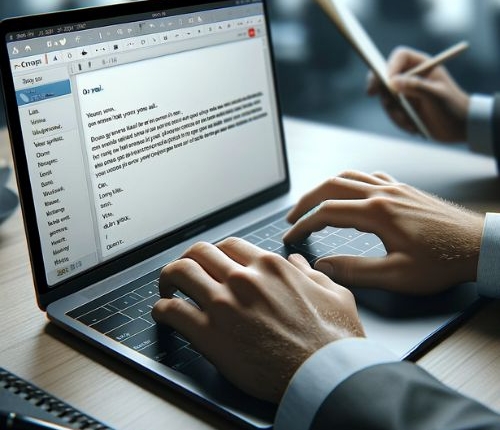how to write an email
The Art of Email Writing
Hey there! In a world where a quick text or a DM is the norm, the good old email still holds its ground, especially in professional settings. But hey, don’t underestimate its power in personal communication too. Writing an effective email can be the difference between getting a prompt response or being ghosted, sealing a deal, or losing it. It’s more than just typing words – it’s about making an impression, conveying your message clearly, and sometimes, even building relationships.
Formatting and Components of an Email
The Anatomy of an Email
Let’s break down an email into its core components. Think of it like building a sandwich – each part has its role:
- To, CC, BCC: These are the bread and butter of your email ‘to’ list.
- Attachments: The extra toppings that can make your email more substantial.
- Subject Line: Like the sandwich’s name, letting you know what’s inside.
- Greeting: The friendly hello before you dive in.
- Body: The meat (or heart) of your message.
- Sign Off: The final touch, like the closing of a sandwich.
To, CC, and BCC: Know the Difference
- To: This is your main audience. Think of it as directly speaking to someone.
- CC (Carbon Copy): These folks are in the loop but not in the spotlight. They’re like the audience in a meeting room.
- BCC (Blind Carbon Copy): Stealth mode. You’re keeping the recipients’ identities secret from each other.
Attachments: Handle with Care
- Why Use Them: Attachments are great for providing extra info without cluttering your email.
- But Remember: There’s usually a size limit – no one likes an overloaded email that won’t open.

Crafting the Email
The Power of the Subject Line
First Impressions Count
- Why It Matters: Your subject line is like the headline of a newspaper. It can make or break the decision to open the email. A good one grabs attention and gives a hint of what’s inside.
- Impact on Open Rates: A compelling subject line can drastically increase the chances of your email being read. It’s the first, and sometimes only, chance to catch your reader’s eye.
Openers and Greetings: Setting the Tone
Starting on the Right Note
- Formal vs. Casual: The opener sets the tone. For professional emails, start formally. For regular contacts, a casual hello works.
- Tailoring Your Greeting: Match your greeting to the relationship you have with the recipient. It’s all about context.
The Body: Clear, Concise, Effective
Getting to the Point
- Stay Focused: Keep your message clear and to the point. No one has time for a novel in their inbox.
- Structure Is Key: Organize your thoughts. Make it easy for your reader to follow and understand your main points.
Signing Off: The Last Impression
Choose Your Closing Wisely
- Match Your Closing: Your sign-off should mirror the tone of your entire email.
- Options for Closings: From “Best regards” to “Sincerely” – choose a closing that fits the context of your email.
Best Practices in Email Writing
The Blueprint for Effective Emails
Nailing the Basics
- Professional Email Address: Always start with a professional-looking email address.
- Clear Subject and Positive Greeting: Set the right expectation and start positively.
- CTA and Closing Remarks: Be clear about what you want the reader to do next. End on a courteous note.
- Professional Signatures: They add credibility and make it easy for people to contact you.
- Consistent Formatting: A well-formatted email is easier to read and looks more professional.
The Finishing Touches
- Spellcheck and Grammar: Errors can be distracting and diminish the impact of your message.
- CC/Bcc Usage: Use them wisely. Understand when and why to include others.
- Scheduling and Follow-ups: Timing is everything. Schedule your emails for maximum impact and set reminders for follow-ups.

The Power of Email in Marketing
Harnessing Email for Effective Communication
A Timeless Tool in a Digital World
In the fast-paced digital era, email stands as a cornerstone in the realm of marketing. Despite the surge of social media and instant messaging, email remains a powerful tool, known for its efficiency and reach. Let’s explore how this tool, often deemed traditional, continues to be vital in connecting with audiences and driving marketing success.
Building Personal Connections
Email marketing, at its core, is about building personal connections. Unlike the broad strokes of social media advertising, emails can be personalized and targeted. This individualized approach fosters a deeper connection between brand and consumer, making each message feel like a conversation rather than a broadcast.
Crafting the Perfect Marketing Email
The Art of Subject Lines
The journey of a successful marketing email begins with the subject line. It’s a make-or-break element that determines whether your email is opened or lost in the abyss of the inbox. Effective subject lines are more than catchy phrases; they’re promises of value, glimpses into the content that awaits the reader.
Content that Resonates
Once you’ve nailed the subject line, the next step is crafting content that resonates. The best marketing emails tell a story, they’re not just a showcase of products. They connect the product to the reader’s needs, desires, and emotions, creating a narrative that the reader can see themselves in.
Call-to-Action: The Path Forward
Every marketing email should have a clear call-to-action (CTA). It’s the signpost that guides the reader on what to do next – whether it’s to buy a product, learn more about a service, or participate in an event. A compelling CTA is direct, clear, and makes the next steps irresistible.
Analyzing and Optimizing
The Cycle of Improvement
The beauty of email marketing lies in its measurability and the ability to optimize based on data. Open rates, click-through rates, and conversion rates are more than just numbers; they’re insights into what works and what doesn’t. This data allows marketers to refine their strategy continually, tailoring content to align more closely with their audience’s interests and behaviors.
A/B Testing: Learning What Works
A/B testing in email marketing is a powerful way to learn about your audience. By changing one element at a time – be it the subject line, design, content, or CTA – and comparing the results, you can continually improve the effectiveness of your campaigns.
Conclusion
Mastering the Email Craft
Bringing It All Together
And there you have it – your guide to writing emails that not only get opened but get results. Let’s do a quick recap:
- The Mighty Subject Line: It’s your first impression, so make it count.
- Greeting and Opener: Set the right tone from the get-go.
- Body of the Email: Be clear, concise, and to the point. No one likes to wade through a wall of text.
- Closing with Flair: Sign off in a way that matches the tone of your message and leaves a lasting impression.
Practice Makes Perfect
Writing an effective email is both an art and a skill that improves with practice. So, don’t be afraid to experiment with different styles and formats. The more emails you write, the better you’ll get at striking the right balance between professionalism and personality.
Remember, your emails are a reflection of you. Whether you’re communicating with colleagues, clients, or friends, take the time to craft emails that are clear, respectful, and purposeful. Keep practicing, keep refining, and soon, you’ll be an email wizard!



